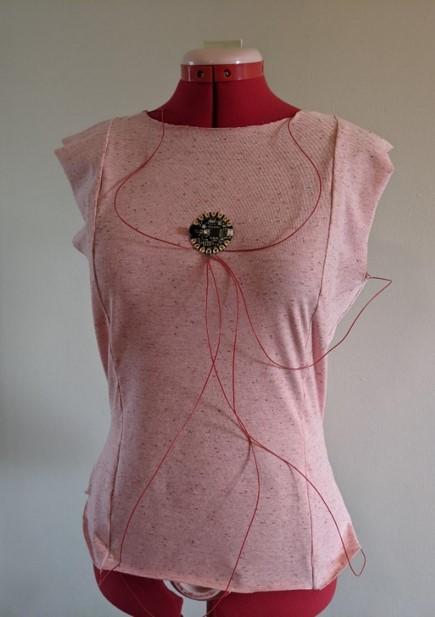A new study from the University of Bath in the UK finds that conductive seams, when strategically placed in clothing, can accurately track body motion
When positioned strategically, garment seams sewn with conductive yarn can be used to accurately track body motion, according to computer scientists at the University of Bath in the UK. Best of all, these charged seams are able to respond to subtle movements that aren’t picked up by popular fitness trackers, such as watches and wristbands.
In a new study, the Bath researchers found that clothing made with conductive seams can be analysed to identify the wearer’s movements.
Groups of scientists have been creating flexible, textile sensors for garments for some time, but the Bath project is the first where researchers have experimented with the location and concentration of conductive seams. They found that where seams are placed on a garment, and the number of seams that are added, are important considerations in the design of a movement-tracking smart garment.
Ms Ruston said: “There’s great potential to exploit the wearing of clothing and tech – a lot of people are experimenting with e-textiles, but we don’t have a coherent understanding between technologists and fashion designers, and we need to link these groups up so we can come up with the best ideas for embedding tech into clothing.”
The yarn used by Ms Ruston and her team comprises a conductive core that is a hybrid metal-polymer resistive material intended for stretch and pressure sensing. Once incorporated into a garment’s seam, it is activated at low voltages. The resistance fluctuates as body movement varies the tension across the seams.
In the study, the seams were connected to a microcontroller, and then a computer, where the voltage signal was recorded.
Professor Mike Fraser, co-author and head of Computer Science, said: “Our work provides implications for sensing-driven clothing design. As opportunities for novel clothing functionality emerge, we believe intelligent seam placement will play a key role in influencing design and manufacturing processes. Ultimately, this could influence what is considered fashionable.”
###
Video explainer:
More than it seams: garment stitching in wearable e-textiles
Media Contact
Vittoria D’Alessio
[email protected]
Original Source
https:/
Related Journal Article
http://dx.





